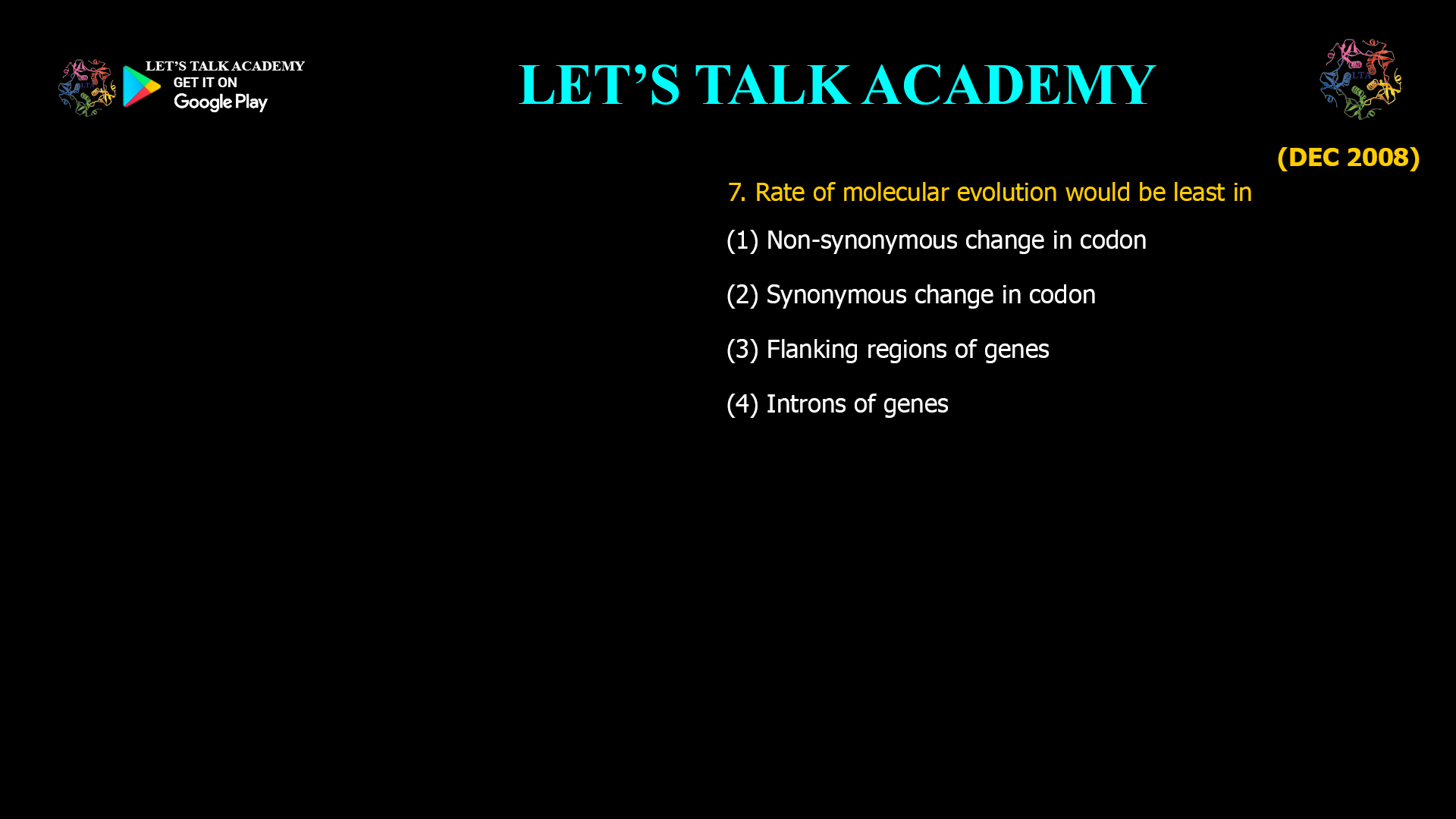- Rate of molecular evolution would be least in
(1) Non-synonymous change in codon
(2) Synonymous change in codon
(3) Flanking regions of genes
(4) Introns of genesWhere Is the Rate of Molecular Evolution Slowest? Non-Synonymous Codon Changes Explained
The rate at which DNA and protein sequences evolve is a fundamental concept in molecular biology and evolutionary genetics. Not all regions of the genome evolve at the same pace—some change rapidly, while others remain highly conserved over time. Understanding which regions evolve most slowly, and why, helps scientists interpret evolutionary relationships and the functional importance of genetic sequences.
What Is a Non-Synonymous Codon Change?
A non-synonymous change (or non-synonymous mutation) is a DNA sequence alteration in a codon that results in a change in the encoded amino acid. This contrasts with synonymous changes, which do not alter the amino acid and are often considered “silent” mutations.
Why Are Non-Synonymous Sites So Conserved?
Non-synonymous mutations can change the structure and function of proteins. Since most proteins are essential for survival and proper cellular function, changes that disrupt their structure are likely to be harmful. As a result, non-synonymous sites are under strong purifying (negative) selection, which removes deleterious mutations from the population. This leads to a much slower rate of molecular evolution in these sites compared to other regions of the genome1.
Comparing Rates Across Genomic Regions
-
Synonymous Codon Changes:
These mutations do not affect the amino acid sequence and are often neutral. They accumulate more rapidly because they are not subject to strong selective pressure3. -
Flanking Regions and Introns:
These non-coding regions are generally under weaker selective constraints, allowing mutations to accumulate more freely and at a faster rate than in coding regions45. -
Non-Synonymous Codon Changes:
Because they can affect protein function, these sites evolve the slowest due to strong selection against most changes1.
Evidence from Molecular Evolution Studies
Research consistently shows that the rate of evolution at non-synonymous sites is much lower than at synonymous sites, introns, or flanking regions. This pattern is observed across a wide range of species and genes, reflecting the critical importance of maintaining protein structure and function13.
Conclusion: The Slowest Rate of Molecular Evolution
Among the options, non-synonymous changes in codons exhibit the slowest rate of molecular evolution. This is due to the strong selective pressure to preserve protein function, making these sites highly conserved across generations and species.
Correct answer:
(1) Non-synonymous change in codon -



